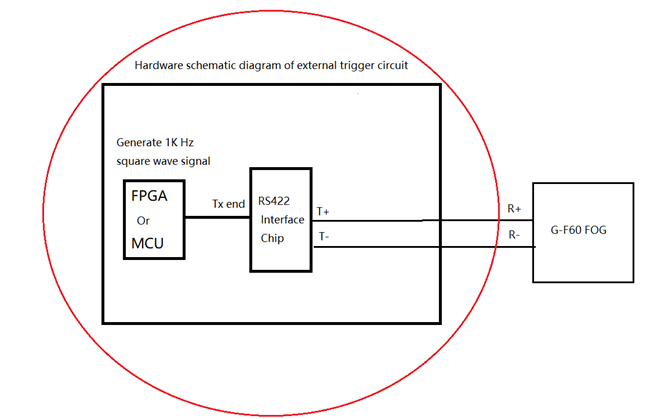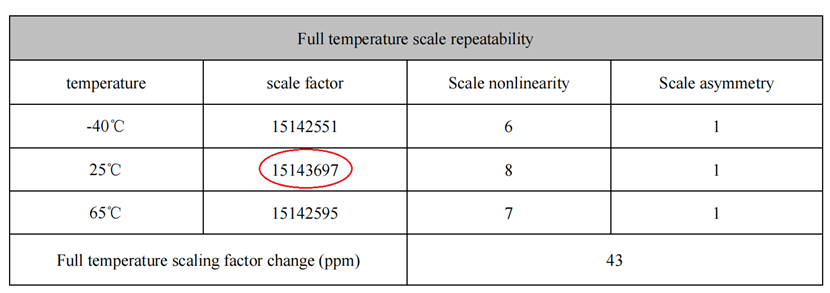General support information
Users should choose an environment with minimal magnetic interference for installation and use. Try to place away from iron, nickel, magnets, engines, and other magnetic substances as much as possible. If there are these magnetic media around, please maintain a distance of at least 0.5m. To ensure optimal measurement performance of the product, non-magnetic screwdrivers and non-ferrous screws must be used during installation. It is necessary to strictly avoid strong magnetic substances such as magnets and motors from approaching within 10cm of the compass, as this may cause an irreversible decrease in the measurement accuracy of the compass.
The calibration of IMU performance indicators such as Zero bias, scale factor, misalignment error, and temperature compensation were mainly carried out. The temperature compensation range is the operating temperature range of gyroscope and accelerometer, and the compensation range varies depending on the product.
To ensure the stability and reliability of sensor performance. Zero bias repeatability testing to ensure consistency in product performance. Conducting high and low temperature, vibration and other environmental tests to ensure product reliability.
Yes, every IMU undergoes temperature compensation before leaving the factory. The temperature compensation range is the operating temperature range of the gyroscope and accelerometer, and varies depending on the product.
The error of inertial navigation mainly comes from the inherent defects of inertial sensors, which increase in a quadratic (position) or linear (attitude) manner over time.
The main reasons for the accumulation of errors over time are: gyro drift, accelerometer bias; the integration of accelerometer bias error can lead to velocity error, and the secondary integration can cause position drift (for example, a 1mg bias for 1 hour can result in a position error of about 60 meters); Temperature sensitivity; Installation error; The sensor coordinate system is not strictly aligned with the carrier coordinate system.
Common methods for addressing error accumulation include:
No, IMU does not have an aging compensation model.
Usually, we fix the MEMS IMU to the turntable, and the accelerometer collects data using a 12-position stationary method. The gyroscope collects data by rotating forward and backward at specific speeds (such as 30 °/s, 60 °/s, etc.), and uses optimization algorithms to obtain the zero bias, scaling factor, and misalignment error matrix of the accelerometer and gyroscope.
At present, our initial alignment uses two sensors, an accelerometer and a magnetometer, to calculate the current attitude angle (roll, pitch, yaw) as the initial alignment angle. When the user sends the instruction FF 5A 68 00 00 F0 1C 0D, the product automatically performs the above initial calibration work and continues to sense the attitude of the target carrier. At this point, AHRS returns the instruction FF 5A 68 00 01 00 1D D4 0D, only notifying the customer whether the initial calibration work was successfully performed. Please note that even if the above command is executed, the output is not zero due to sensor measurement errors.
Our fiber optic gyroscope supports RS422 bidirectional serial communication protocol. The transmitter (Tx+, Tx -) is used to send gyroscope measurement data to the client-side, and the receiver (Rx+, Rx -) is used to receive external trigger signals. You need to design a hardware circuit board as shown in the following design diagram, or use existing circuit design to utilize the following functions.

The gyroscope output data includes angular velocity and temperature data. The original value of angular velocity data is a 32-bit signed integer, and the temperature data is a 16-bit signed integer.
Convert temperature data to Celsius temperature values:
Assuming the received temperature data is Dt, Te=Dt * 0.0625, Te unit is ℃
Convert angular velocity data to angular velocity values in degrees per second:
Assuming the received angular velocity data is Dg, the gyroscope scale factor given in the manual is Kg, and the sampling frequency (gyroscope communication frequency) is fs
Angular velocity W=Dg/(Kg/fs)
The following shows the changes in the scale factor at different temperatures in our test report, and their variations are minimal at different temperatures.
Please use the values at 25 ° C room temperature: 15143697

Compared with GNSS/INS integrated navigation systems, pure inertial navigation (relying only on inertial sensors and not on external signals such as GNSS) has unique advantages in specific scenarios, mainly reflected in autonomy, reliability, environmental adaptability, and system simplification;
The core weakness of pure inertial navigation is the accumulation of errors over time, but it can be optimized by selecting high-precision sensors such as fiber optic gyroscopes (FOG) and laser gyroscopes (RLG) with drift rates much lower than MEMS, which are suitable for long endurance tasks; Zero Velocity Update (ZUPT)
technology and the method of regularly resetting the position.

Xml política de Privacidade blog Mapa do site
Direitos autorais
@ Micro-Magic Inc. Todos os direitos reservados.
 SUPORTADO POR REDE
SUPORTADO POR REDE
